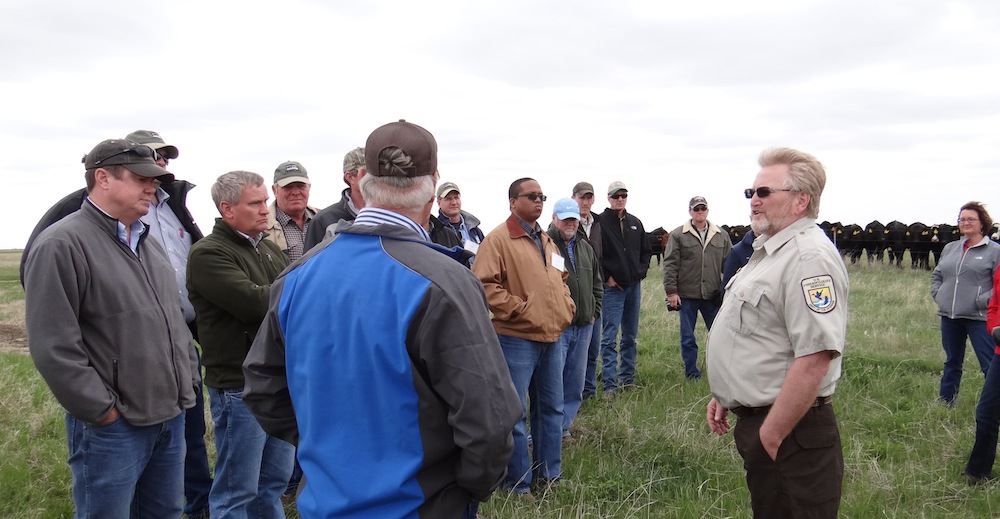On May 12-13, 2015, the PPJV and the South Dakota Grassland Coalition (SDGC) hosted a field tour of “Grassland Conservation on Private Lands” near Aberdeen, SD. The purpose of the tour was to expose decision-makers to landowner perspectives on grassland conservation, land change, and to provide opportunities for developing new partnerships. Approximately 50 participants from across the nation attended the two-day event, which consisted of a series of eight landowner presentations and associated field visits to three working ranches throughout the Missouri Coteau portion of South Dakota. The tour was made possible by the efforts of many people and organizations including Ducks Unlimited, The Nature Conservancy and the USDA Natural Resources Conservation Service (NRCS).
The participants agreed a high point of the event was hearing first-hand examples from local landowners regarding the real world challenges and rewards of ranching in the PPR. Several of the landowners provided case histories of how changes in agricultural technology and economics have influenced the larger landscape of the Missouri Coteau. Others discussed site-specific grazing management practices and how they influence grassland ecology and livestock performance. A common theme throughout the discussions was the desire to maintain livestock ranching as an economically viable segment of South Dakota’s agricultural landscape and social fabric. Also a highlight was the NRCS rainfall simulator presentation. The presentation perfectly complemented the field tour by illustrating the amazing ability of healthy grasslands to protect soil, reduce runoff and recharge groundwater supplies.
A wide variety of information was presented illustrating that ranching and bird conservation have much in common and the associated benefits have continental significance. For example, it was noted that ducks banded on wetlands near one of the ranches on the tour route have been recovered in 31 states and 13 countries. Furthermore, several examples were discussed in which partnering with landowners is a central goal of recent conservation planning exercises. For example, in the 2011 USFWS Land Protection Plan for the Dakota Grassland Conservation Area, a primary goal is to “conserve working landscapes based on ranching and livestock operations that support a viable livestock industry.”
Plans are already in motion for a follow-up tour in the spring of 2016 with a primary emphasis on developing specific conservation strategies and action items that will benefit both the landowners and landscapes of the PPJV.
For more information, contact Jim Faulstich, Chairman, South Dakota Grasslands Coalition, faulstich@venturecomm.net

